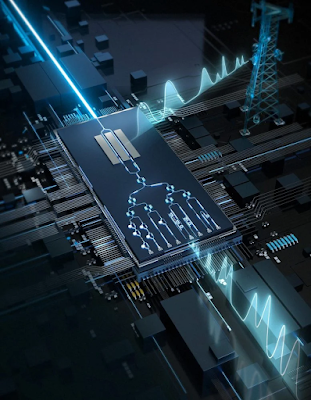"Researchers have achieved quantum coherence at room temperature by embedding a light-absorbing chromophore within a metal-organic framework. This breakthrough, facilitating the maintenance of a quantum system’s state without external interference, marks a significant advancement for quantum computing and sensing technologies". (ScitechDaily, Quantum Computing Breakthrough: Stable Qubits at Room Temperature)
Japanese researchers created stable quantum entanglement at room temperature. The system used a light-absorbing chromophore along with a metal-organic framework. This thing is a great breakthrough in quantum technology. The room-temperature quantum computers are the new things, that make the next revolution in quantum computing. This technology may come to markets sooner than we even think. The quantum computer is the tool, that requires advanced operating- and support systems.
When the support system sees that the quantum entanglement starts to reach energy stability. It must start to create another quantum entanglement and transport data out from the first entanglement. Another way to make the quantum entanglement stable. Is to pump energy out from the receiving part.
Information is like the plague on the qubit. And quantum entanglement is like a wire that transports that plague to another qubit. So, qubits are particles in both ends of quantum entanglement. The system makes superposition and entanglement between those particles.
In that process, the system adjusts those particle's oscillations into the same frequency, and if another particle's energy level is lower, that makes the energy and information flow to the lower energy particle. Stable quantum entanglement is required. That the system can keep receiving part of the quantum entanglement at a lower energy level.
.
"The team has developed a world-leading MWP (Microwave Photonics) chip capable of performing ultrafast analog electronic signal processing and computation using optics. Credit: City University of Hong Kong" (ScitechDaily, 1,000x Faster: Ultrafast Photonics Chip Reshapes Signal Processing)When both sides of the qubit are at the same level, a standing wave between them breaks quantum entanglement. The support system can send a side-coming laser beam to the receiving qubit. That makes it transport energy into the lower energy particles. Then the system must create a qubit to the opposite side. Those qubits can form a morphing network in the system
The AI-controlled systems require microchips that can operate at very high speed. The photonic microchips are 1000X faster than regular microchips. The photonic microchips do not form magnetic fields around them. And that system can operate with quantum computers. The AI-based operating systems control photonic microchips whose mission is to turn binary data into qubits. And that thing makes photonic microchips more powerful than ever before.
AI-based kernels and operating systems increase those systems' power.
In the structure, the photonic microchips can also act as morphing tools. It's possible. That the morphing microprocessor can change its state between quantum computers. And binary computer. That makes this kind of system flexible and powerful. The new metamaterials make it possible to create switches and logical gates that make this system more effective.
When researchers want to make extremely fast binary microprocessors. They can use three lines. Two lines transport data. The operating system system interprets data that travels in line 1 as zero (0). Data that travels in line 2 is interpreted as one (1). There is also the third line, that tells that the power is on in the system. This kind of system can have three layers.
1) Regular binary layer that runs AI-based operating system.
2) Photonic processor layer.
3) Quantum layer.
The regular binary layer controls the AI-based kernel. The photonic microchips can be even faster than nobody believed. The system may give numbers for every data impulse that it sends through photonic microchips. In that system, the bit has a recognition part, but that requires the AI-based operating system and AI-based kernel.
In that system, the transmitter sends number 1 (or 3,5,7...). That tells the operating system that the data bit comes from line one. And when the system sends 2 (or 4,6,8..) That thing is interpreted as line 2. The regular binary system is the thing that controls the photonic system.
That helps the AI-based operating system connect those bits in the right order if there is a malfunction in those lasers. The wire 1 can give odd numbers to the bit. And line can give an even number for the bit. That ability to number those bits makes it possible to transport data in one line.
https://scitechdaily.com/1000x-faster-ultrafast-photonics-chip-reshapes-signal-processing/
https://scitechdaily.com/metamaterial-magic-scientists-develop-new-material-that-can-dynamically-tune-its-shape-and-mechanical-properties-in-real-time/
https://scitechdaily.com/quantum-computing-breakthrough-stable-qubits-at-room-temperature/






No comments:
Post a Comment
Note: Only a member of this blog may post a comment.